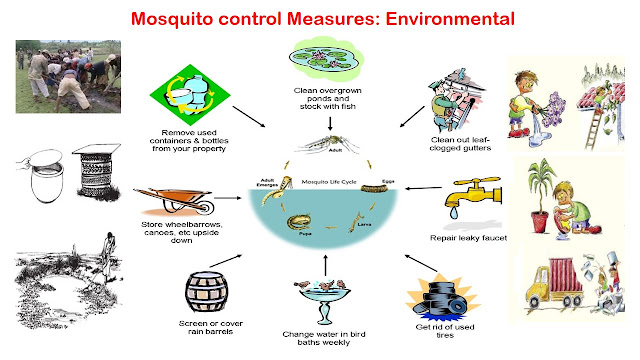Diabetes Mellitus: Know your disease
What is it?
Diabetes mellitus is a group of metabolic disorders in which there is too much sugar in the blood (high blood glucose). It occurs due to a relative lack of a hormone called insulin, which is formed by a gland situated behind the stomach named the pancreas. Diabetes is a Greek word meaning to pass/flow through & mellitus means 'sweet'. The balance of sugar (glucose) in the body is controlled by Insulin & allows our body cells to use available glucose for energy.

What are the types?
Mainly three types:
(a) Type 1 diabetes/ Insulin dependent diabetes mellitus (IDDM)/ Juvenile diabetes: In this type our body is not able to make enough insulin needed due to damage of the pancreas by the body’s immune system. Occurs mainly in young people. less common.
(b) Type 2 diabetes/ Non Insulin dependent diabetes mellitus (NIDDM)/ Adult onset diabetes/ Maturity onset diabetes: In this type our body is able to make insulin but cells fail to use them properly ie. resistance develops. Occurs mainly in people over 40 years of age who are mostly overweight & have diet with excess of energy, have strong family history & sedentary lifestyle.
(c) Gestational diabetes/ Pregnancy induced diabetes: It occurs in pregnant women without previous diagnosis of diabetes. High blood glucose level develops due to reduced sensitivity of insulin receptors which may later lead to Type 2 diabetes.
What are the symptoms?
The classic symptoms of diabetes:
- Polyuria i.e frequent (hourly/so) & excessive urination ( at night particularly)
- Polydipsia i.e feeling of excessive thirst
- Polyphagia i.e feeling of excessive & frequent hunger
- Feeling of tiredness, weakness & lack of energy
- loss of weight (mainly in type 1) & loss of muscle bulk
- Frequent oral thrush
- Frequent infections, especially of the skin
- Slow healing of wounds/cuts
- Blurring of vision
How diagnosis is done?
Mainly by levels of blood glucose & HbA1c
1. Blood glucose tests: Include fasting blood sugar (FBS), two hour post prandial blood sugar (PP) & oral glucose tolerance test
2. Glycated Haemoglobin (HbA1c)
Diabetes diagnostic criteria | |||
Condition | 2 hour* plasma glucose | Fasting plasma glucose | HbA1c |
mmol/l(mg/dl) | mmol/l(mg/dl) | % | |
Normal | <7.8 (<140) | <6.1 (<110) | <6.0 |
Impaired Fasting Glucose | <7.8 (<140) | ≥ 6.1(≥110) & <7.0(<126) | 6.0–6.4 |
Impaired Glucose Tolerance | ≥7.8 (≥140) | <7.0 (<126) | 6.0–6.4 |
Diabetes mellitus | ≥11.1 (≥200) | ≥7.0 (≥126) | ≥6.5 |
*Venous plasma glucose level 2 hours after ingestion of 75 gm oral glucose load
Other tests which support in diagnosis are:
- Lipid Profile (fasting): Includes total cholesterol, LDL, HDL & triglycerides
- Liver function tests (LFT)
- Kidney function tests (KFT)
- Thyroid function tests (TFT)
Is it curable ?
No, not till now, but it can be controlled by balanced diet, regular exercise and medications if needed. Most of the people with diabetes lead a normal life with good management of the disease. Key factors are controlled blood pressure, blood sugar & cholesterol. A healthy & balanced diet along with exercise are the necessity.
How its management is done?
Basic aims of management are:
- Fasting blood sugar (FBS): 6.1 to 8 mmol/L
- HBA1c: < 7%
- Total cholesterol: < 4 mmol/L, LDL: < 2 mmol/L, HDL: > 1 mmol/L, triglycerides: < 2 mmol/L
- Urinary albumin excretion: < 20 mcg/min timed overnight collection & < 20 mg/L spot collection
- Albumin creatinine ratio: < 2.5 mg/mmol-men, < 3.5 mg/mmol-women
- Blood pressure: < 130/80 mmHg without proteinuria & < 125/75 mmHg with proteinuria (1 gm/day)
- Ideal weight, and waistline not > 94 cm for men and 80 cm for women
- Body mass index (BMI): 18-25 Kg/m2 where practicable
- Low-fat & high complex carbohydrate diet
- No cigarette smoking
- No or minimal (2 or less standard drinks [20 gm] per day) alcohol
- Exercise: at least 30 minutes of walking (e.g. 2 km per day), 5 or more days a week (150 minutes per week). Aerobics, tennis, swimming etc. can also be done
1. Life style measures
- Balanced diet: A special diet in which carbohydrateand fat intake is controlled. The objectives are to keep(a) Ideal weight (neither fat nor thin)(b) The blood sugar level normal and the urine free of sugar
- This is achieved by:• Eating good food regularly (not skimping)• Spacing the meals throughout the day (three main mealsand three snacks)• Cutting down fat to a minimum• Avoiding sugar and refined carbohydrates (e.g. jam, honey, chocolates, sweets, pastries, cakes, soft drinks)• Eating a balance of more natural complex carbohydrates(starchy foods) such as wholemeal bread, potatoes andcereals• Eating a good variety of fruit and vegetables• Cutting out alcohol or drinking only a little• Learning about glycaemic index (GI) foods and preferablyeating low-GI foods.
- Exercise: Very important
- No smoking
- Oral antidiabetic drugs (OADs)
- Insulin
- Treatment of coexisting medical conditions
What are the complications due to diabetes?
Less common & less severe in people with controlled blood sugar levels. These are
Acute:
1. Diabetic ketoacidosis (DKA)
2.Hyperglycemia
3.Hypoglycemia
4. Diabetic coma
Chronic:
(a) Micro-vascular diseases: occurs due to damage to small blood vessels. These are
- Eye diseases-Retinopathy, macular edema
- Neuropathy-Sensory,motor & autonomic
- Nephropathy- may lead to CRF
(b) Macro-vascular diseases: These are
- Coronary artery disease (CAD)
- Peripheral arterial disease (PAD)
- Cerebrovascular disease (CVD)
(c) Other diseases:
- Cateract
- Glaucoma
- Bacterial, fungal & other skin infections
- Periodontal diseases
- Cheiroarthropathy
- Diabetic dyslipidemia
References:
- Deed G, Ackerman E (eds). General Practice Management of Type 2 Diabetes. Melbourne: Diabetes Australia & RACGP, 2013–14 (book available from www.diabetes australia.com.au or www.racgp.org.au
- RACGP. Guidelines for Preventive Activities in General Practice (the red book) (8 th edn). Melbourne, 2013: 55–7. < www. racgp.org.au/guidelines/redbook >









Comments
Post a Comment